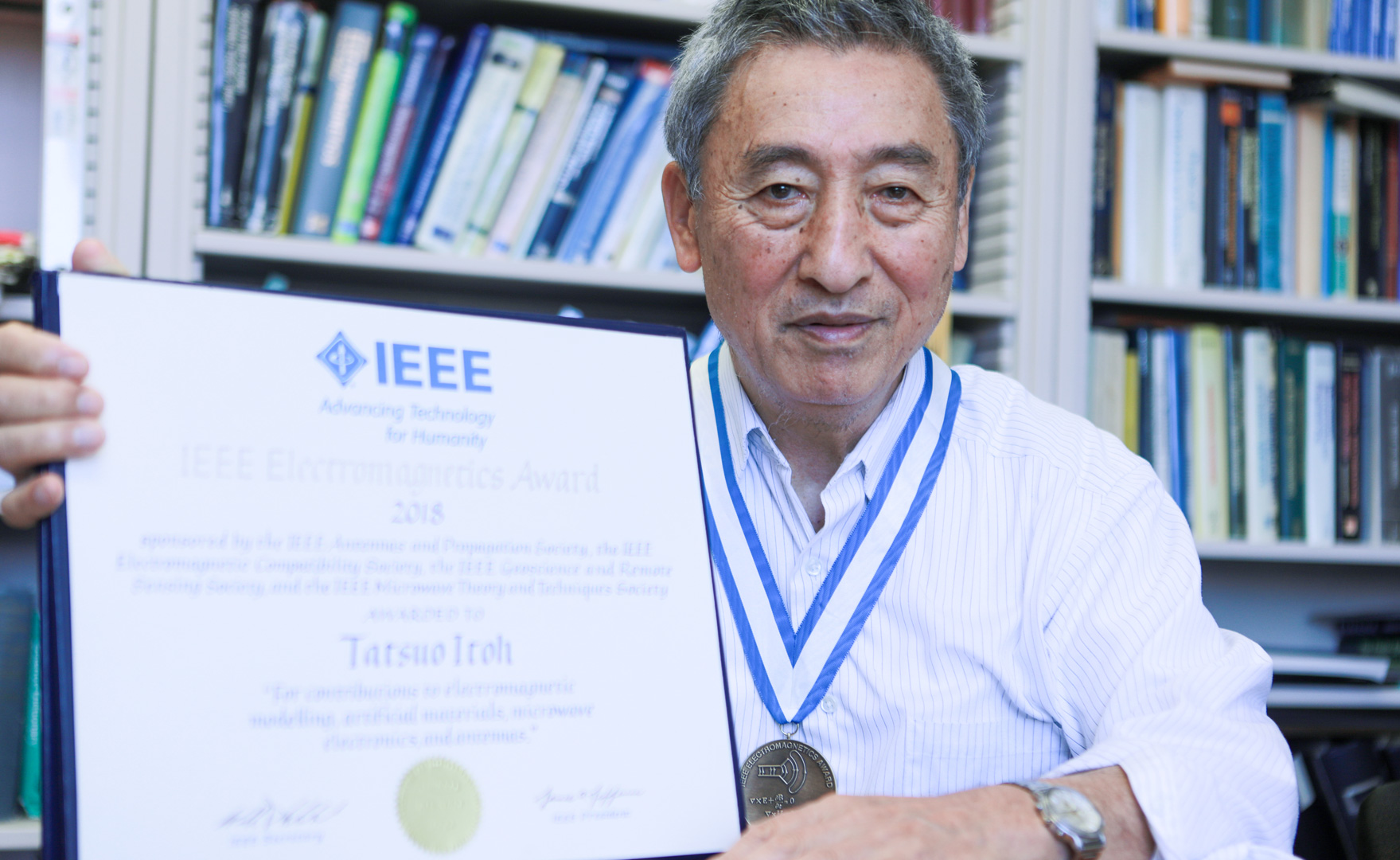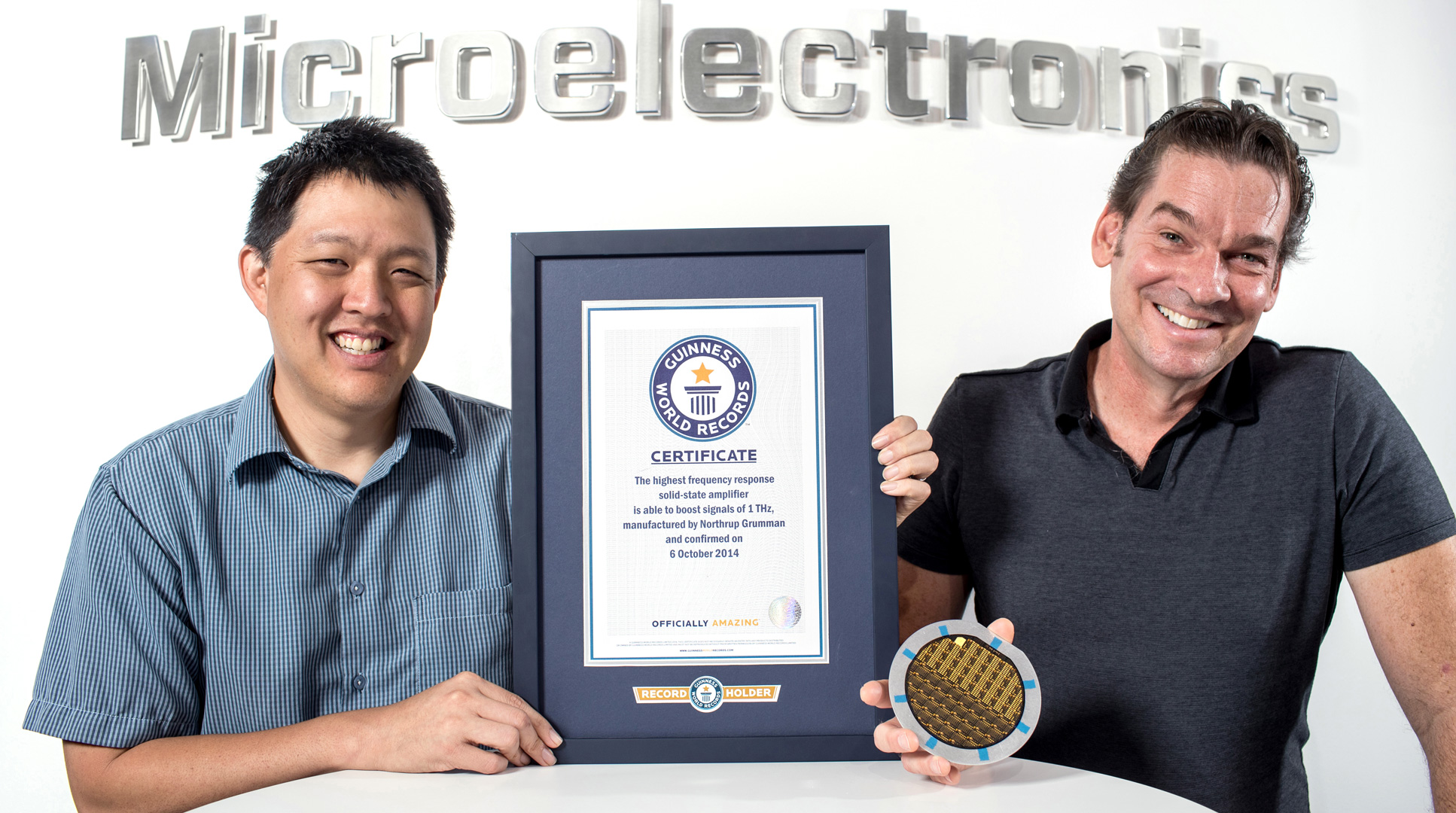
Serene and soft-spoken, one would not, at first glance, assume that Tatsuo Itoh, distinguished professor and the Northrop Grumman Chair in Electrical Engineering at UCLA Samueli, is known as “Dragonman.”
Yet, when the sharp flint in his eye catches a spark while discussing his latest insight in the intricate world of microwave engineering, or his sharp wit takes hold of an otherwise mundane exchange of pleasantries, Professor Itoh exhibits a keen and disciplined intellect worthy of the noblest of dragons
Born in the Year of the Dragon, he was aptly named Tatsuo, “dragon” in Japanese, and much like the creatures known to symbolize growth, strength and good fortune, he has built an extraordinary repute.

He has been elected member of the National Academy of Engineering, has received the Microwave Educator Award and Microwave Career Award from the IEEE Microwave Theory and Techniques Society, and the Shida Rinzaburo Award from the Japan Ministry of Post & Telecommunications, to name a few accomplishments. Yet, through the years, Professor Itoh has refused to rest on his laurels and has untiringly kept up groundbreaking research in electromagnetics and microwave electronics.
His most recent award, the 2018 IEEE Electromagnetics Award, one of many accorded to him by IEEE, recognizes his outstanding achievements in the four distinct areas of electromagnetic modelling, artificial materials, microwave electronics, and antennas.
As the distinguished professional association states in its recognition: “With over 50 years of theoretical and technological innovations, Tatsuo Itoh is among the most famous and respected experts in electromagnetics and microwave techniques.”
Professor Itoh extended electromagnetic simulation to high frequency applications, developing models that allow inclusion of relevant interactions between microwave circuit elements, their packaging, and the electromagnetic environment. His comprehensive field-based approach to global modeling helped establish the system-in-package concept important to smart phones.
Furthermore, his spectral domain method for microwave circuit analysis has become one of the most popular techniques for computer-aided design of microwave components. Recent achievements include realizing metamaterials enabling leaky-wave antennas that can continuously scan from the backward wave region to the forward wave region as a function of frequency.
Not content to simply advance his professional achievements, Samueli graduates who have had the good fortune of being advised by him are summarily ushered into the Dragon Gate Club, whose doors are open for lifelong mentorship.
The name of the club comes from Professor Itoh’s understanding that his students will undoubtedly face challenges and will have to pass through gates, often guarded by fierce dragons, in order to excel professionally. He actively mentors his students long after they have left his lab in the Engineering IV building, and enjoys a close network of alumni.
A testament to his professional dedication, his legacy continues on through the achievements of his students. Two former Ph.D. students, William Deal and Kevin Leong, both engineers at Northrop Grumman, recently took the fundamentals learned under his tutelage to develop the world’s fastest integrated circuit amplifier that operates at one-trillion cycles per second or at a speed of 1 terahertz. The accomplishment had been thought unimaginable just a decade ago.
One can almost surmise that the mythical wisdom and success of dragons may just be a reality for Dragonman and his students.

